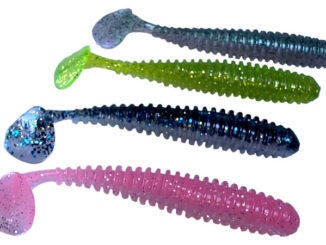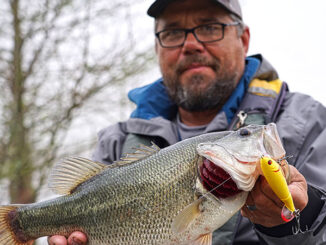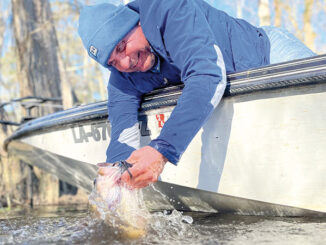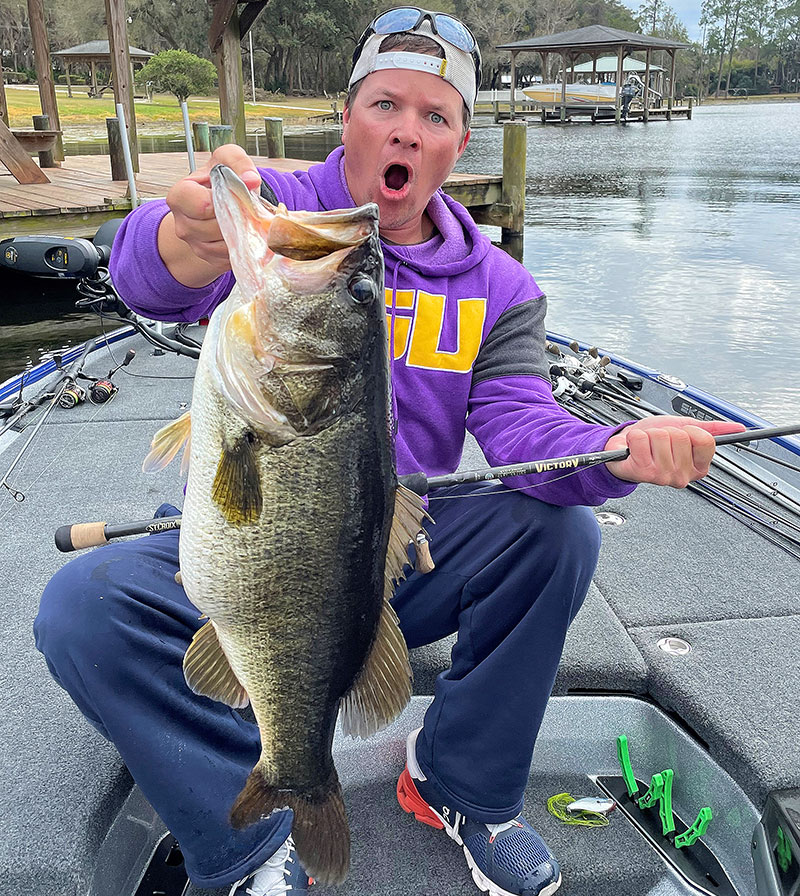 With most hunting seasons over or winding down, many sportsmen sit by their heaters or fireplaces in February to wait for warm spring weather.
With most hunting seasons over or winding down, many sportsmen sit by their heaters or fireplaces in February to wait for warm spring weather.
Not bass fishermen!
February means prime time to catch lunker largemouths before they spawn. Once a large female releases her eggs, she could lose several pounds. Four of the top 10 Louisiana bass, including the state record, hit the scales in February, with March accounting for two giants.
“My most memorable fishing days have been in February on Toledo Bend,” opined Darold Gleason, a Bassmaster Classic veteran and guide (337-397-8860, gleasonfishing.com) out of Many. “When we find a special area where those big ones go before spawning, we can make something magical happen.”
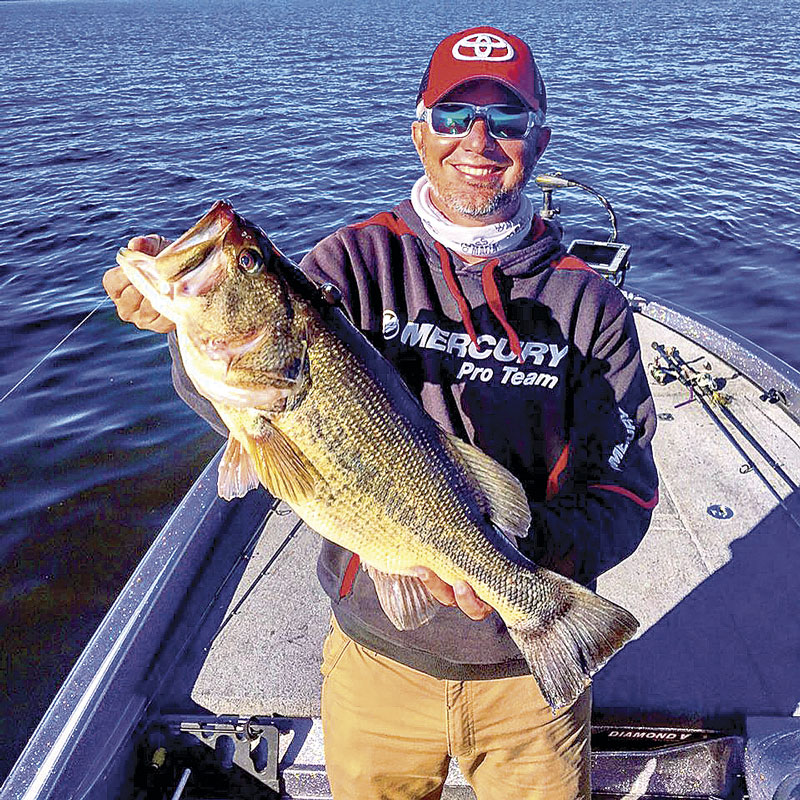
Before heading shallow, pre-spawn bass stage in deeper water. Use electronics to find any depth changes or places where bass can easily access both deep and shallow water. Small ditches and creek channels create highways that fish follow to get to the spawning grounds. In deep lakes like Caney or Toledo Bend, some small ditches could sit in 15 to 20 feet of water.
“In any waters, first identify where fish are going to spawn,” said Derek Hudnall, a Bassmaster Classic veteran from Zachary. “Concentrate on ditches or fish highways they use to travel from deeper water to the flats. Giant flats always have ditches running through them. The flat might be two feet deep, but a channel might be three to four feet deep. A major creek could have several smaller creeks flowing into it. Where creeks intersect can be an absolutely incredible place to fish. Pre-spawn fish will be near those access ditches.”
Eat now, spawn later
Spawning requires considerable energy. When actively spawning, bass don’t eat much so they need to build up energy reserves by gorging themselves before spawning. But big pre-spawn bass want to grab a substantial meal without expending too much energy to catch it. Use slow-moving baits with large profiles. In colder water, bass won’t run down fast-moving baits like they might in the fall, so work any bait as slowly as possible.
“My favorite time to fish is when I find pre-spawners in deeper water leading up to a full moon,” Gleason said. “When I find bass in at least 15 to 20 feet of water, I always have four things rigged. I’m going to have a Carolina rig tipped with a V&M Baby Swamp Hog creature bait or a V&M Pork Shad soft jerkbait. I’ll also have a 3/4-ounce football jig with a V&M J-Bug craw-style trailer, a Rapala DT-16 or Strike King 6XD crankbait in chartreuse powder blue and a tail-spinner bait called a V&M Little Hammer.”
With jigs or Carolina rigs, just drag them along the bottom. For crankbaits, use ones that dive slightly deeper than the bottom so the lip digs into the mud. That creates a trail like a crawfish scurrying on the bottom and bouncing action of the lure. Few bass can resist slurping a crawfish at any time.
Cypress trees and knees line the banks of many Louisiana streams and create great cover for bass. The wetland loving trees commonly grow in water up to seven feet deep. Bass in those areas habitually spawn around the trees, especially in the protected shallows between the trees and the shoreline.
“In South Louisiana, February is the time to look for the biggest bass,” Hudnall said. “That’s when I like a bait with a big profile and a lot of flash, like a ½-ounce spinnerbait with a big Colorado blade reeled very slowly. I also like to flip a ½- or ¾-ounce jig around cypress trees and other cover.”
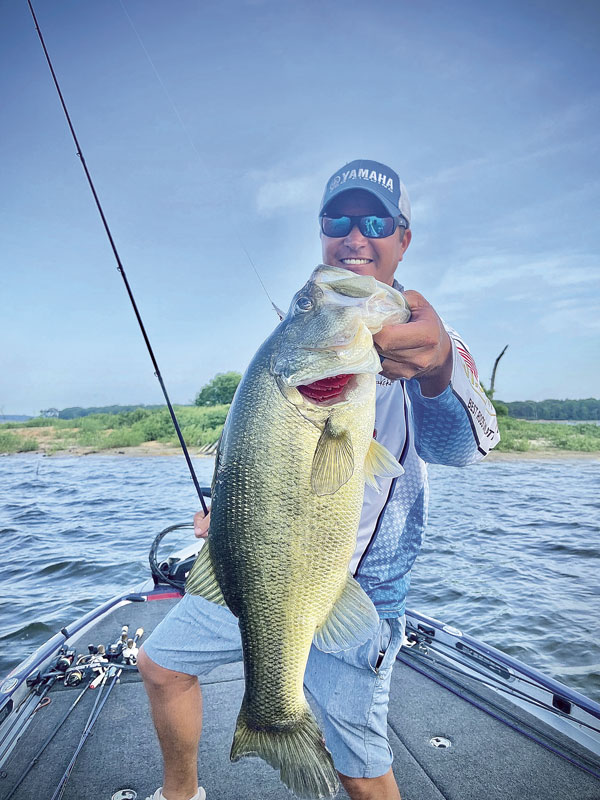
River tips
River channels can scour deep holes. Water must run faster along the outside of a river bend than on the inside. Therefore, silt drops out on the inside, creating sandbars, but currents carve deeper holes on the outside. Sometimes, logs and other debris sink into deeper holes, making more bass cover.
“When fishing a river, look for a big flat on the shallow side and deeper water closest to that flat,” Hudnall said. “A deep bend in a river close to a shallow flat is a great place for bass to stage before spawning. Isolated cover is a major bass attractant in South Louisiana, especially in a river. I like to fish around an isolated cypress tree or a cluster of trees growing in the water.”
Currents dictate bass and bait movements in a river. Feeding bass face upstream just outside of the flow, such as behind a stump blocking the current. Fish hiding behind obstacles wait to grab anything flowing to them, but the fish spawn in areas with little to no current.
In the coastal marshes, bass stay shallow all year long because some bayous and manmade canals hold the only deeper water. Bass might stage in the mouths of small tributaries flowing into major bayous or canals. In tidal areas, water flows in different directions throughout the day so bass adjust to the flow.
“In tidal situations, learn where the lowest tide will be,” Hudnall said. “In the marshes, most bass will spawn in ponds that still hold water at low tide. That’s where bass find the most stable water and can get away from the current. Bass might spawn in water only 10 to 12 inches deep at low tide.”
Grassy edge clue
Grass forms the dominant cover in marshes. Grassy edges usually mark the drop-off to deeper water. Working these edges could yield monster largemouth.
“Bass might set up around thick weeds to feed before heading to the spawning grounds,” Hudnall said. “For fishing the weeds during the pre-spawn, I like a big jig, a big vibrating jig or a big spinnerbait. I’ll tip the jig with a Missile Baits D Bomb. It’s a craw-like bait with a large profile.”

A weedless jig tipped with a craw trailer makes an excellent presentation for hawgzilla largemouth all year long. A craw trailer mimics a crawfish. In the marshes, the claws imitate a crab. Bass in tidal areas consume large quantities of crabs and shrimp.
As water begins to warm, male bass head shallow first to look for bedding sites. Females arrive about two to three weeks later. Bass usually begin spawning when water temperatures reach about 62 to 68 degrees, but not all waters warm at the same rate. In a system as large and complex as Toledo Bend or the Louisiana marshes, spawning could stretch from late January through May, peaking during the spring full moons.
Bedding bass eat very little. However, the male bass vigorously defends the eggs and fry against hordes of nest raiders. Bedding bass typically won’t chase baits far, but they will attack any nest invader to kill or drive it away. Soft-plastic creatures mimic notorious nest raiders, such as salamanders and crawfish. For tempting bass on the beds, pull lures into the nest and keep them there.
“If water temperatures stay in the upper 50s for a week or so, I start looking for spawners,” Gleason said. “I put on a good pair of polarized sunglasses and rig up a Texas rig with a V&M J-Bug in white. In water clear enough, we can see the bed and the fish. I want to see the lure and how fish react to it. When I see how fish react to the bait, I can often aggravate them into biting.”
Stump spawners
In stumpy lakes like Caddo, Bistineau or northern Toledo Bend, run baits around stumps and grass growing in shallow flats to entice a reaction strike. A spinnerbait, ChatterBait or a Rat-L-Trap in a crawfish red color could work.
“After we’ve had a little warm weather, bass get up on the flats,” Gleason said. “Then, they roam around for a while before spawning. That’s when I throw ChatterBaits or lipless crankbaits, depending upon the depths. I also use a Carolina rig with a ½-ounce weight or a crankbait that runs about eight to 10 feet deep.”

In many Louisiana waters, docks create cover that hold bass all year long. Shielded from avian predators, many bass spawn under docks. The pilings resemble flooded timber. Docks frequently mark deeper water so the owners can pull their boats up to them. Many dock owners establish brush piles near their docks to attract bream or crappie. Small bream and crappie attract monster bass.
“Bass waiting to spawn often hang around docks, especially ones with nearby brush piles,” Gleason said. “With good forward-looking sonar, people can watch the fish and see how they react to certain baits. I like a ¼-ounce football jig with a craw-style trailer. Drag the bait on the bottom until it comes in contact with the brush pile. Then, work it like a Texas rig. In February, bass will be around the bottom of the pile.”
February normally brings cold, miserable fishing conditions, but any strike could produce the bass of a lifetime. Bundle up and stay flexible. Fish react to changing weather so must anglers.
Do whatever it takes to put fish in the boat and make the magic happen!
